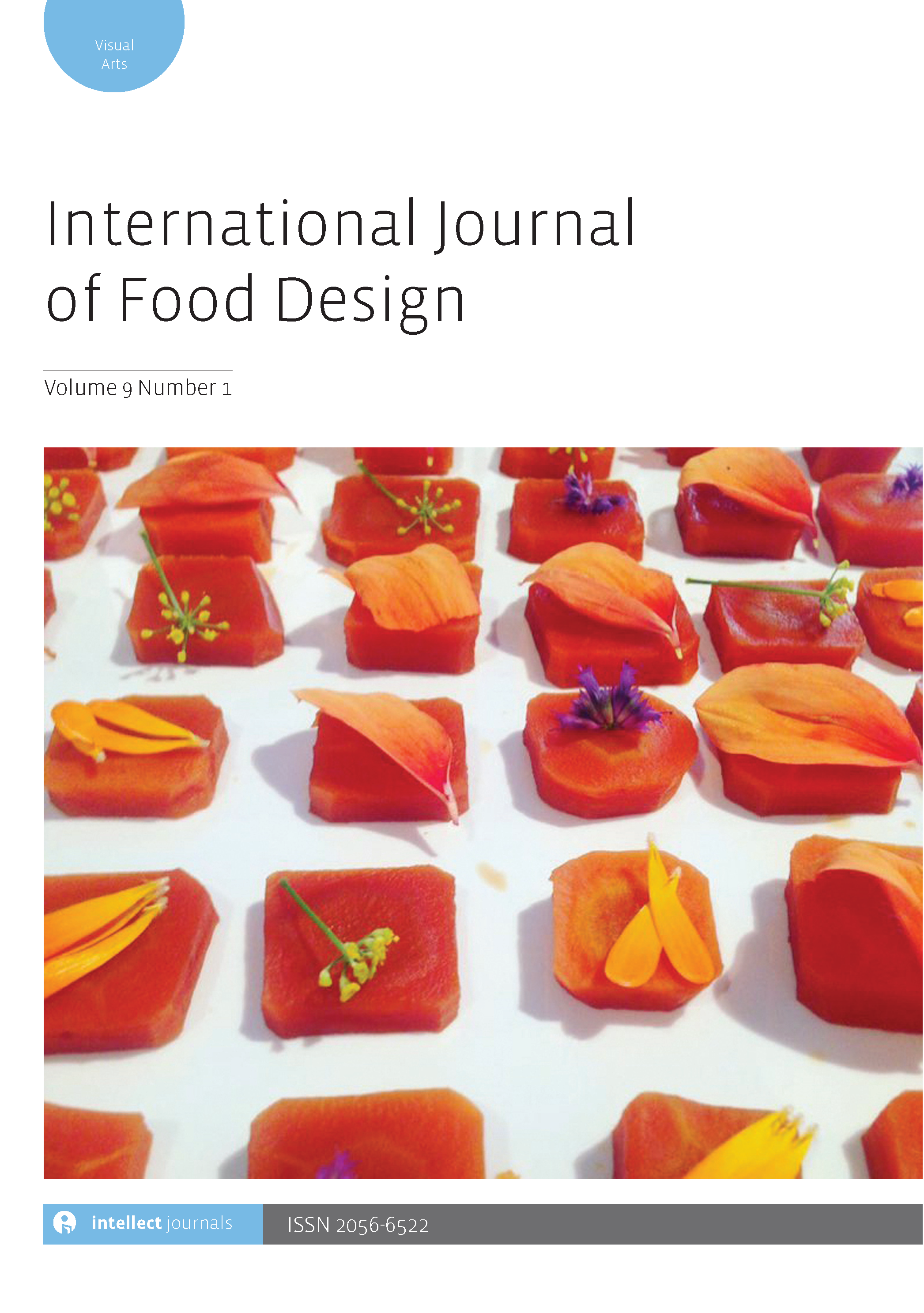-
oa Familiarity trumps playfulness: Exploring children’s preferences for playful design of vegetables
- Source: International Journal of Food Design, Volume 5, Issue 1-2: Creative Tastebuds 2020, Dec 2020, p. 43 - 64
-
- 24 Jun 2020
- 31 Aug 2020
- 01 Dec 2020
Abstract
Vegetable-based food and drink products are becoming more popular in the United States with increased awareness of health benefits as well as their positive environmental impact. Yet, there is a lack of attention in marketing these healthy vegetable food products to children, particularly in comparison to less-nutritious food products that are effectively utilizing child-oriented design in the marketplace. This article includes four exploratory studies. The first three studies are part of a co-design process involving children and chefs to create playful vegetable products that appeal to children. These studies result in a variety of playful vegetables concepts which are then evaluated in different methods by children. The preliminary results of these studies indicate that children do not prefer playful versions of vegetables significantly more than familiar versions. The final study presented in this article specifically examines the role of familiarity and colour on a child’s preference towards select vegetable products. Contrary to expectations, a trend uncovered in all four studies demonstrate children’s inclination towards the more familiar versions of a vegetable, illustrating a need for more appropriate design interventions to effectively bring about positive changes in children’s food choices.



